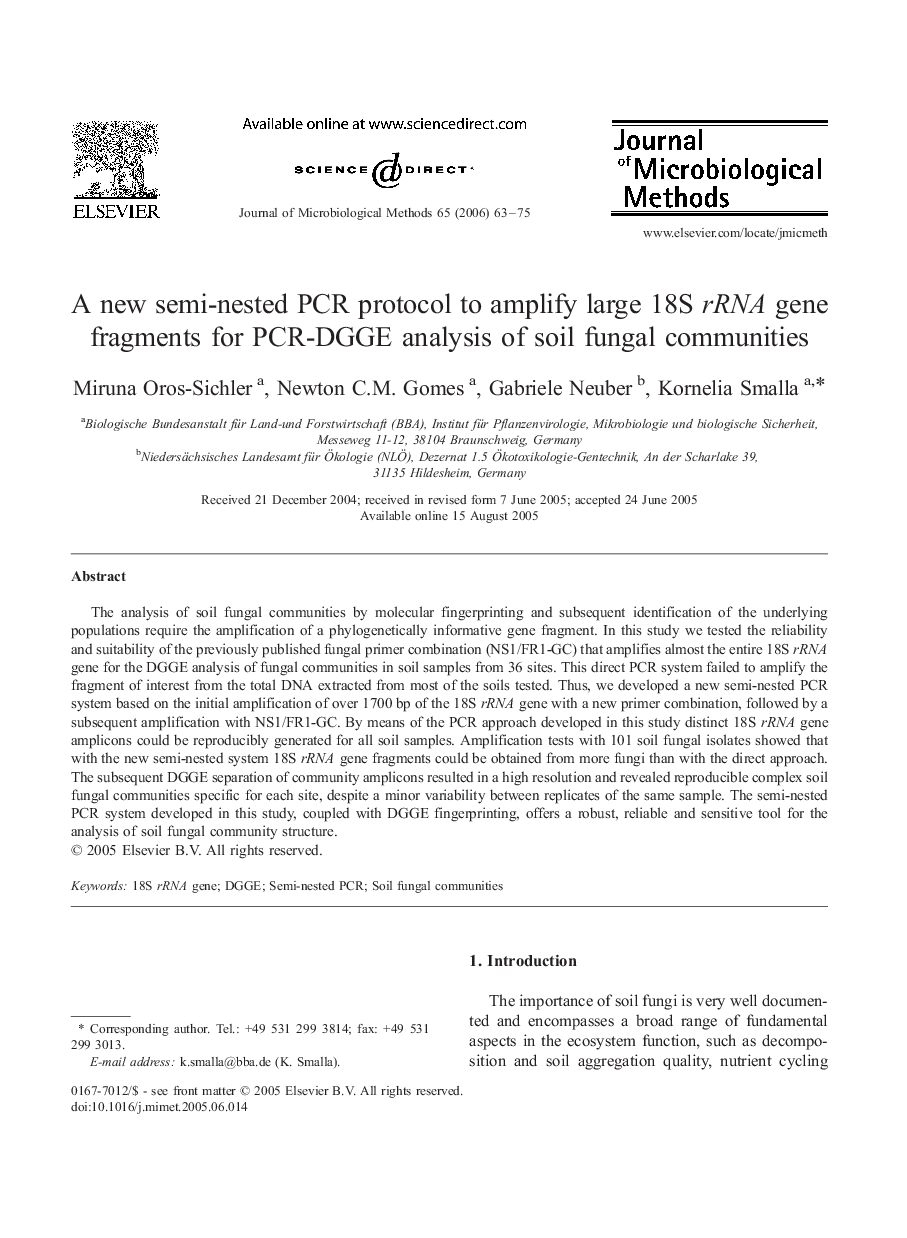| کد مقاله | کد نشریه | سال انتشار | مقاله انگلیسی | نسخه تمام متن |
|---|---|---|---|---|
| 2091370 | 1081543 | 2006 | 13 صفحه PDF | دانلود رایگان |

The analysis of soil fungal communities by molecular fingerprinting and subsequent identification of the underlying populations require the amplification of a phylogenetically informative gene fragment. In this study we tested the reliability and suitability of the previously published fungal primer combination (NS1/FR1-GC) that amplifies almost the entire 18S rRNA gene for the DGGE analysis of fungal communities in soil samples from 36 sites. This direct PCR system failed to amplify the fragment of interest from the total DNA extracted from most of the soils tested. Thus, we developed a new semi-nested PCR system based on the initial amplification of over 1700 bp of the 18S rRNA gene with a new primer combination, followed by a subsequent amplification with NS1/FR1-GC. By means of the PCR approach developed in this study distinct 18S rRNA gene amplicons could be reproducibly generated for all soil samples. Amplification tests with 101 soil fungal isolates showed that with the new semi-nested system 18S rRNA gene fragments could be obtained from more fungi than with the direct approach. The subsequent DGGE separation of community amplicons resulted in a high resolution and revealed reproducible complex soil fungal communities specific for each site, despite a minor variability between replicates of the same sample. The semi-nested PCR system developed in this study, coupled with DGGE fingerprinting, offers a robust, reliable and sensitive tool for the analysis of soil fungal community structure.
Journal: Journal of Microbiological Methods - Volume 65, Issue 1, April 2006, Pages 63–75